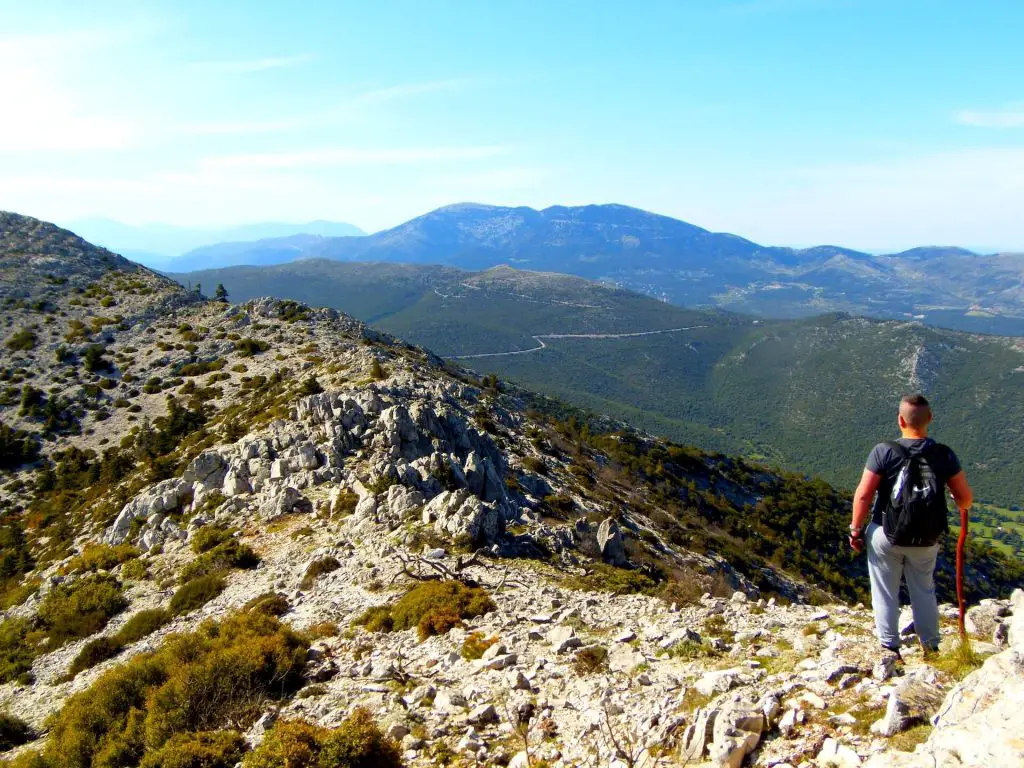
Figuring out which pants to wear for your hike can be a difficult decision. You open your closet and your only choices are jeans or sweatpants. You’re about to go on a hike and are wondering should you wear jeans or sweatpants for your next hike?
If your only choices are jeans or sweatpants, the best option is to wear sweats as they will provide you with more flexibility and room for your legs to move. This will allow you to be more nimble on the trail. Also if your legs start to heat up during the hike then it is much easier to roll up sweats than it is to roll up jeans. You should also bring a back-up pair of pants in case it rains as both jeans and sweats are cotton and will become soaked.
Everyone has to start somewhere with hiking and sometimes you just have these two options for your pants and that is okay. Trying to decide between which pants and what to pack are normal to preparing for a hike. We will go over the pros and cons of hiking in either jeans or sweatpants so you can make your own decision.
Is it Okay to Hike in Jeans?
Material
It is understandable to have jeans as your go to for hiking since everyone likely owns a few pairs in their closet. Jeans are stylish and will look good on the trail and you can technically go hiking with them, however, jeans are not designed for hiking so there are a few things to be mindful of. Jeans are quite comfortable for everyday use whether it be going to work, grocery store, or shopping.
Most jeans are made of 100% cotton. . Since jeans are made of 100% cotton once you start sweating or if it rains you will feel miserable as your jeans will act like a sponge wrapped around your legs. Cotton takes a long time to dry, so your legs will be very uncomfortable. Each step you take on your hike works your legs and generates heat. The cotton will trap the heat and warm your legs, which leads to more sweat from your legs. Since most jeans wrap tightly around your legs you will quickly become uncomfortable.
If your weather forecasts potential rain or you are hiking in the mountains at high altitude then you can encounter unexpected rain. To help protect your body and keep your dry you should bring a rain poncho. You want to avoid getting your jeans wet from the rain otherwise you can get blisters on your legs from the wet pants and constant rubbing motion after each step. You also want to keep your legs dry to help keep your internal temperature constant.
Frog Togg Ultra Lite Rain Poncho on Amazon
Durability
While most jeans are made of 100% cotton, they are designed to be very durable. The main benefit of using jeans over sweats is the durability. Jeans will be able to better withstand any debris such as rocks or branches that you encounter on the trail. The wear and tear on your pants will be apparent after your hike as there are many things that can rub, snag, or scratch your pants that you might not even be aware of.
Breathability
Jeans are only slightly more breathable than sweats. Both will do a pretty poor job of getting good airflow to your legs. This will lead to your legs quickly heating up once you start hiking. The downside to jeans over sweats is that its generally really uncomfortable to roll up your jeans, so you will likely have to hike with your jeans covering your legs for the whole hike. The lack of breathability only helps when its cold. Your jeans will help trap in heat to keep your legs warm, but once you start sweating you will experience discomfort if there is any wind or breeze.
Is it Okay to Hike in Sweatpants?

Material
Sweat options seem like a good option to take on your hike. They are comfortable, flexible, and cozy, however, sweatpants are also not designed to be out on the trail. Most sweatpants are made of mostly cotton and cotton is a bad choice to take on a hike. Cotton will absorb all moisture and holdt the moisture like a sponge. As you sweat your pants will soak in your sweat and get heavier. if it rains your pants are done for. Each step will be an uncomfortable soggy mess. Keep this in mind if you plan on hiking at higher altitudes or during a possible rainy day.
If you plan on hiking in your sweatpants and there is potential for rain then you should definitely bring rain poncho. The poncho will help keep the water away from your sweat pants. You will be dry and your sweatpants will still be cozy. You should avoid getting your sweatpants wet at all costs during your hike.
Frog Togg Ultra Lite Rain Poncho on Amazon
When to wear them
You can probably safely and comfortably wear sweatpants on short hikes and on days where the weather is overcast and cool. These ideal weather conditions are optimal for sweatpants as you won’t get too warm and you won’t sweat too much. You should completely avoid hiking in sweatpants during the summer months as your legs will likely become drenched in sweat.
On the flipside, the idea of wearing sweats to hike in the Winter might sound appealing, however you should also definitely avoid this. If snow gets onto your sweatpants then they will soak right in and become freezing cold. Also the design of sweatpants does not block wind so your legs will be freezing from windchill.
Final Thoughts
Having to decide between jeans or sweatpants for your hike can be a tough call. Both feel completely different and both have their pros and cons. Now that you learned what things to watch out for such as sweat, weather, and trail debris you can make a more informed decision. Wearing sweatpants is the better choice of the two due to flexibility and being able to roll the pants up to cool off your legs.
While neither are the ideal choice, sometimes we have to just make a decision and take a hike without overthinking things. In the future you might be wondering whats the difference between normal pants and hiking pants. Check out our post on what makes a good pair of hiking pants so you can buy the best hiking pants for your budget. Enjoy your hike whether it be in sweats or jeans!
